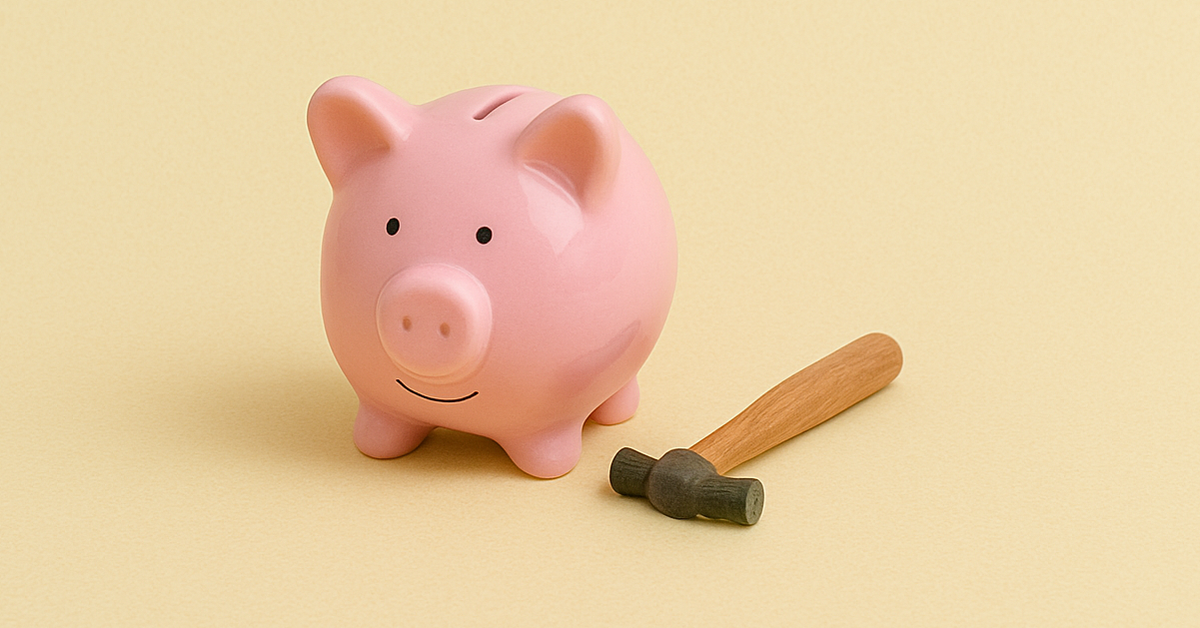Why Every American Should Aim for at Least $19,800 in Savings in 2025

KEY POINTS
- The average household spends around $6,600 per month on living expenses.
- Setting aside a three-month emergency fund would equal $19,800 in savings.
- A high-yield savings account is the best place to keep (and grow) an emergency fund.
My wife and I keep about $25,000 stashed in a high-yield savings account. That covers roughly three to four months of our family expenses, which average around $7,000 per month.
Turns out, we're not far off from the average American household. According to the latest data from the Bureau of Labor Statistics, U.S. households spent an average of $6,440 per month in 2023. Add in last year's 2.9% inflation, and 2025 spending is likely closer to $6,600/month.
Multiply that by three months and you land at $19,800 -- the new baseline for a healthy emergency fund.
Why cash savings is so important
An emergency fund isn't just about preparing for the worst. It's about giving yourself peace of mind and options.
Here's what a solid emergency fund really gives you:
- Less stress. Knowing you can handle a surprise bill (or three) helps you sleep better at night.
- Avoid debt. No need to slap emergencies on a high-interest credit card.
- Career flexibility. Hate your job? You can walk away and take time to find the right fit, not the first offer.
- Freedom to relocate. If a better opportunity comes up in a new city or state, you've got the funds to make the move without hesitation.
- Family resilience. Whether it's a health scare, a car issue, or your kid's dental emergency, you're ready.
Where to keep your savings (and earn more on it)
I personally earned $798 in interest last year just by keeping our cash in a high-yield savings account (HYSA). That's about $66 per month I didn't have to work for!
HYSAs earn the highest interest rate possible, while keeping your funds liquid and available at any time. They're also FDIC insured, so extremely safe.
Today's top high-yield savings accounts offer rates around 4.00% APY, which is more than 55x the national average for a checking account. If you have cash sitting idle, you really need to move it to an HYSA.
Just make sure you choose a bank that doesn't charge any monthly fees. Check out this Barclays Tiered Savings account, which is one of our top picks right now offering 4.00% APY.
How to build up your emergency savings
First, open a new, dedicated account for your savings. Keeping this money in a completely separate bank will stop you from dipping into those dollars for non-emergencies.
Next, set-up automatic transfers each month into that account. For example, every Friday you could transfer $50 from your checking over to savings.
If you have any windfalls, tax refunds, birthday money, etc. try to save those too and build your fund faster. Saving an extra $300 a month in a 4.00% APY account could grow to $19,854 in just five years.
Saving today means freedom tomorrow
Having $19,800 in savings might feel like a stretch. But it's exactly what the average household needs to cover three months of expenses in 2025.
Start where you are. Keep your cash in a high-yield savings account that actually pays you. Build your fund one dollar at a time, and don't stop until you hit your number.
Disclaimer: Investing carries risk. This is not financial advice. The above content should not be regarded as an offer, recommendation, or solicitation on acquiring or disposing of any financial products, any associated discussions, comments, or posts by author or other users should not be considered as such either. It is solely for general information purpose only, which does not consider your own investment objectives, financial situations or needs. TTM assumes no responsibility or warranty for the accuracy and completeness of the information, investors should do their own research and may seek professional advice before investing.
Most Discussed
- 1
- 2
- 3
- 4
- 5
- 6
- 7
- 8
- 9
- 10